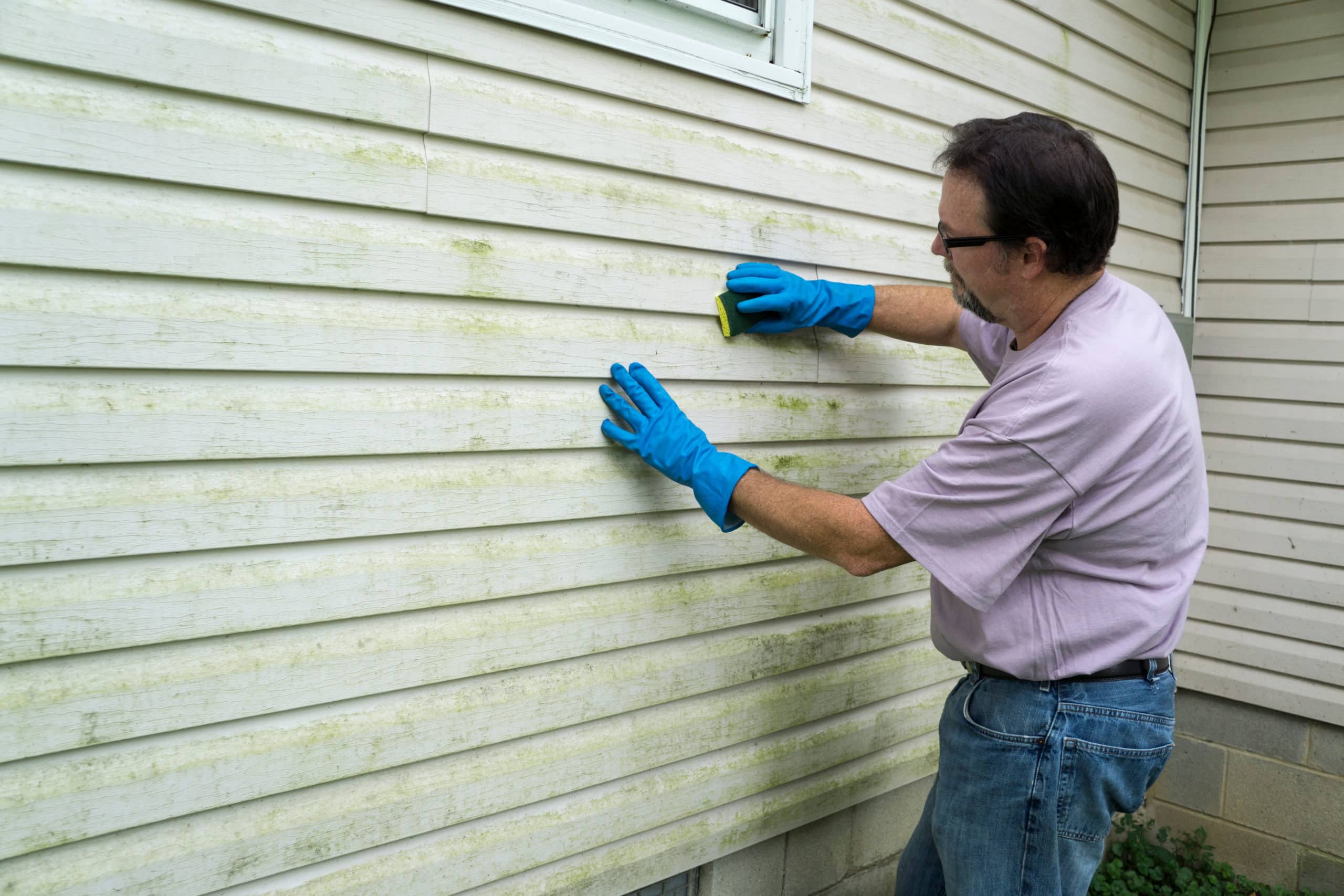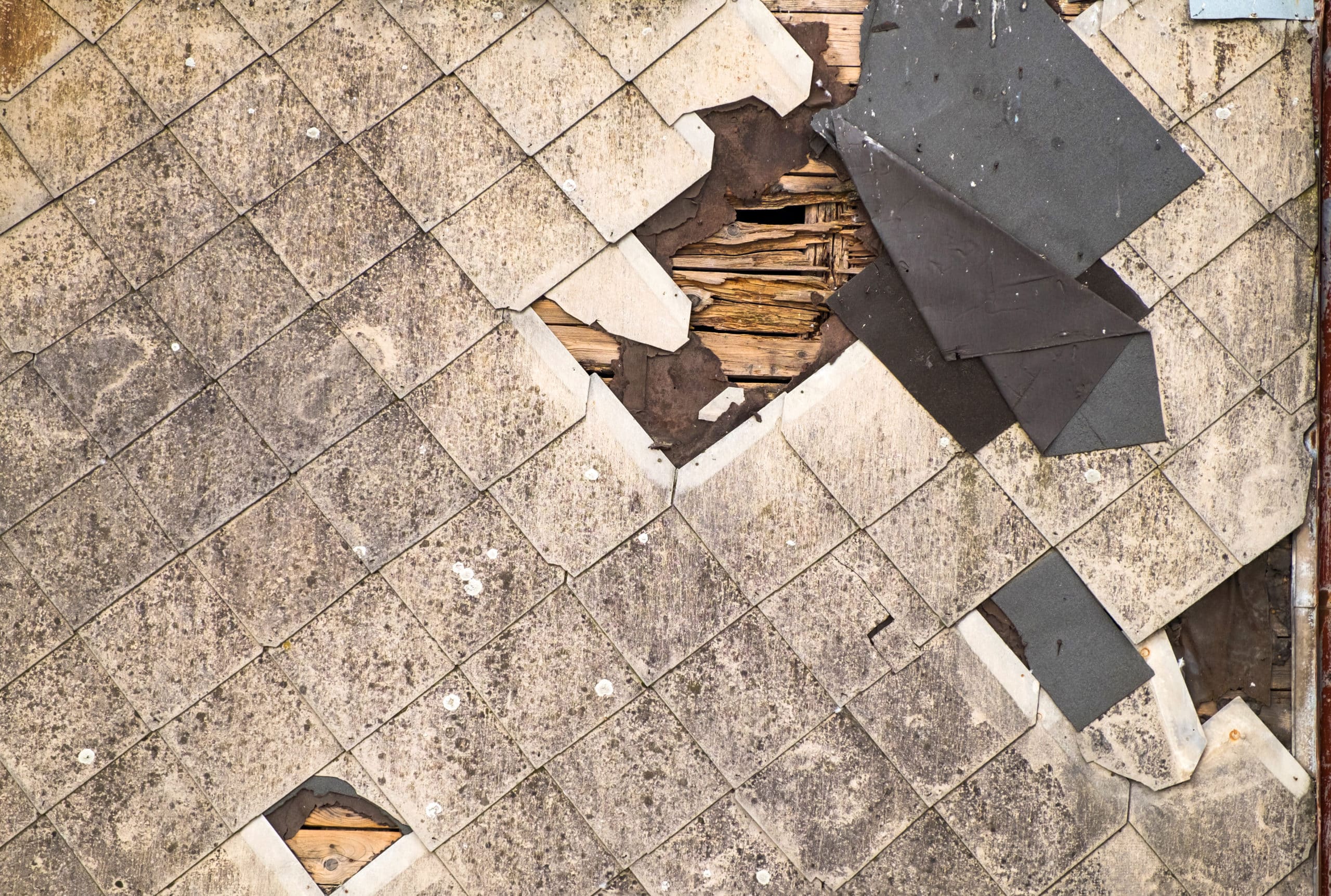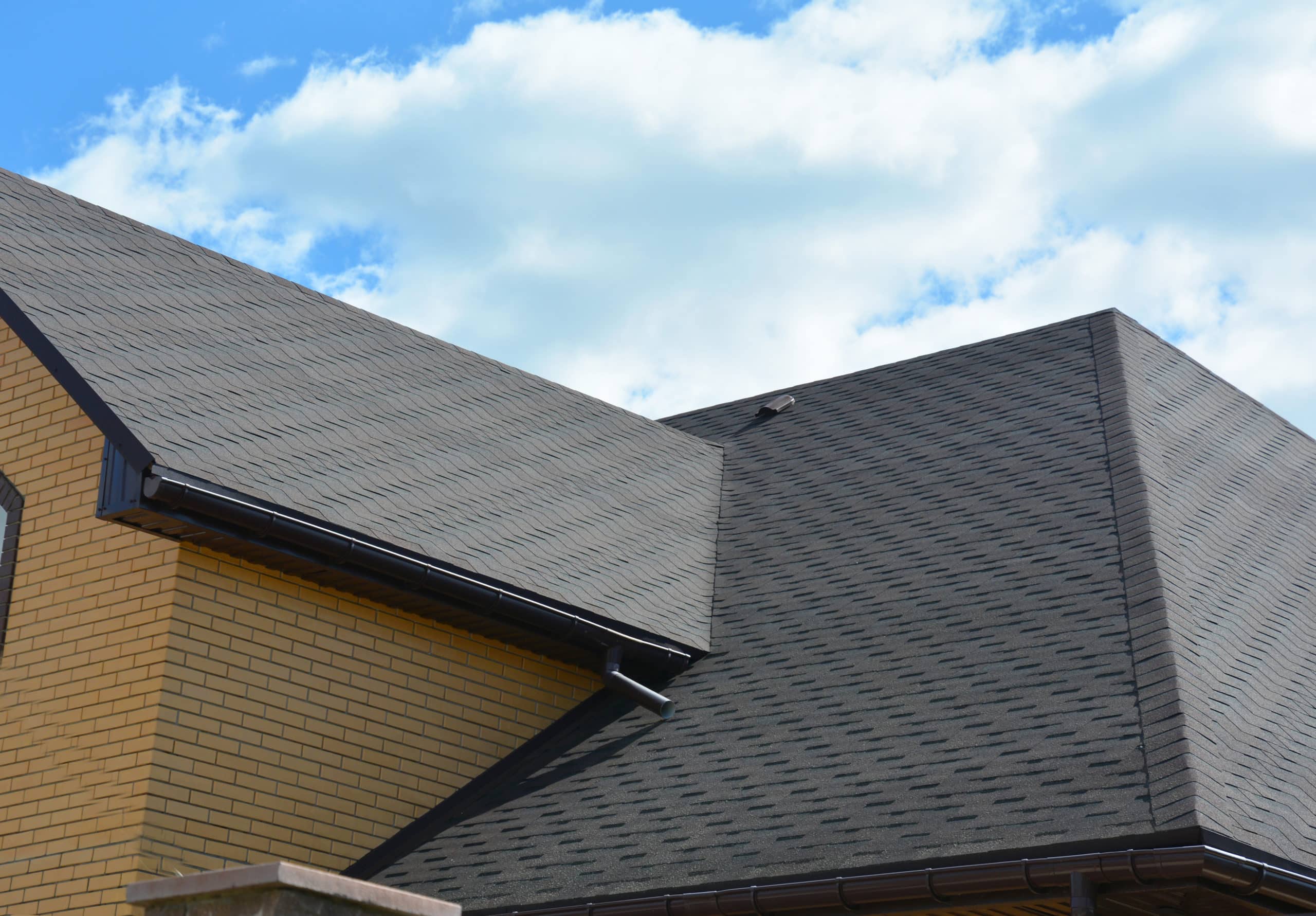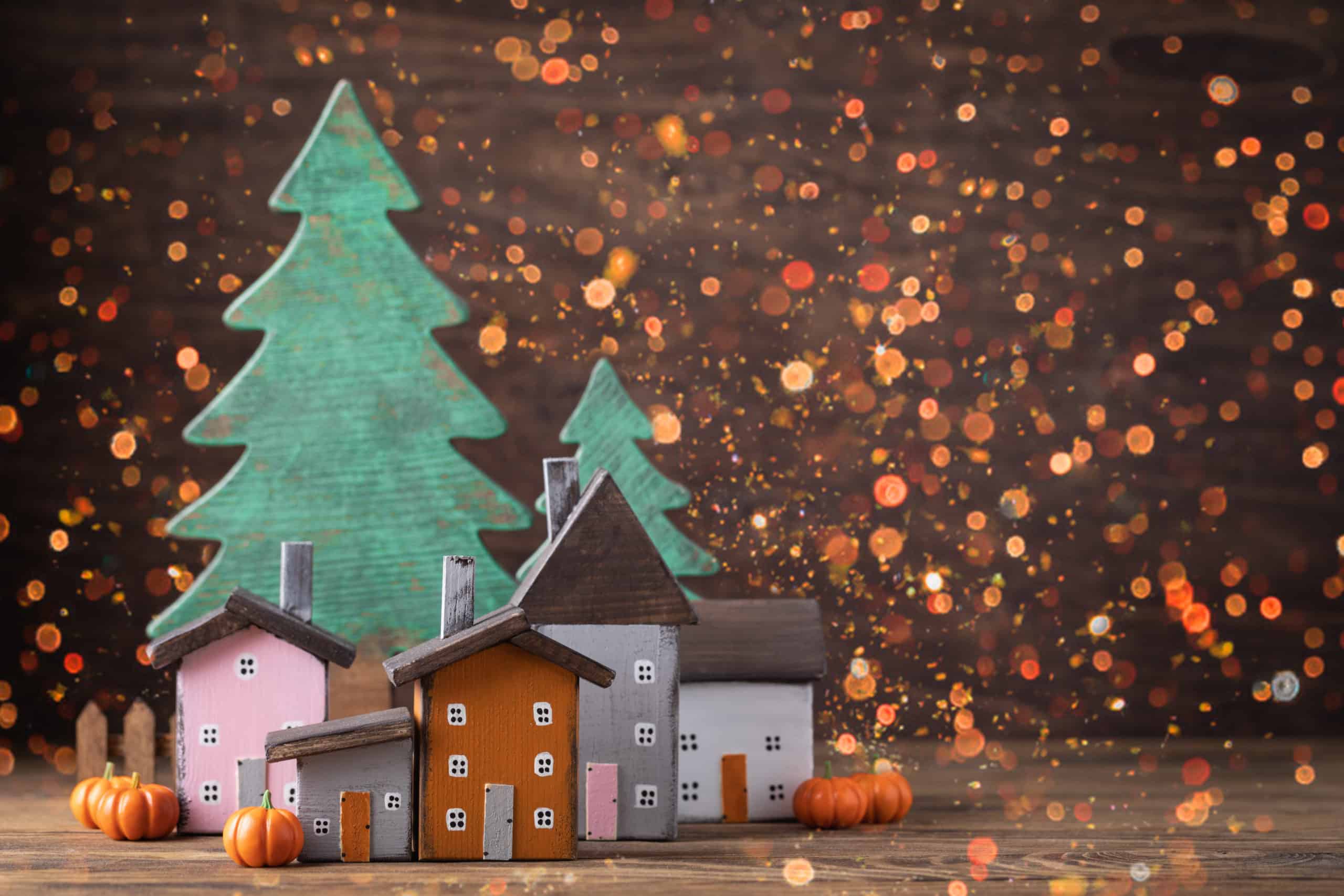Whether it is the scorching summer sun or the howling debris-filled winds to winter weather abuse, you will eventually have to clean your . While modern siding is durable there is nothing that can stop vinyl siding from becoming dingy, especially after years of exposure to the elements.
Here are some of the most common issues that require cleaning:
- Common exposure: UV rays from the sun are the most common exposure concerns when it comes to siding. High winds, rainstorms and winter weather, bird droppings and pollution are also common exposure elements that will affect the look of your siding.
- Mold and mildew: Moisture, whether it is from high humidity, rain or melting snow can lead to mold and mildew issues. Sadly all three of these things happen almost routinely in New England. Some areas of your home will receive less direct sunshine and tend to be the most affected, as mold and mildew grow more rapidly in these areas.
- Stains: There are different types of stains and it is important to know the difference. A reddish brown stain on your siding is usually from rusty nails. Mold, fungus or algae typically cause black and green stains. Finding yellow stains on siding typically means that that the insulation or sheathing behind it has deteriorated. If you have gutter problems, then you’ll notice water stains.
- Chalk accumulation. Chalking is a build up of powder usually caused by UV light that reacts with the chemicals in the paint. There are several components that make up paint, and the chalking residue is basically oxidized components of the paint.
- Debris and dirt. Another common problem is debris and dirt that are whipped into the air by winds and accumulate on your siding. It can gather in gaps in the siding and cause streaking stains after a rainstorm.
Knowing what is causing your siding to become dilapidated can help you choose the right method for cleaning it and get it back to near its original state.
How to clean vinyl siding to remove dirt and mold:
Vinyl siding has grown in popularity over the years because it is less expensive than other siding materials, it is fairly easy to maintain and it comes in a variety of shapes, styles and colors. And while it is easy to maintain, it’s going to become grimy at some point after years of exposure to debris.
There are many ways to clean this type of siding, but is is advised to use a soft cloth or soft-bristle (non-metal) brush.
If the vinyl siding has any mildew and/or mold, you’ll need to use a cleaning solution, such as a mixture of water and white vinegar (70 percent water to 30 percent vinegar). But remember, what you put on your siding will end up on the ground, so whatever chemical you use you have to make sure that it won’t your landscaping.
Clean vinyl siding without scrubbing:
Does scrubbing 2,800 square feet sound appealing to you? Probably not, so luckily for you there are ways to clean your siding without scrubbing. You can use a pressure washer or a soft-bristled brush attached to a long-handled wand and a container full of cleaning solution attached to a garden hose to apply the solution and knock down the grime safely from the ground.
This non-scrubbing method is best applied to siding that has not accumulated a multitude of grime. This task shouldn’t be too difficult to remove without scrubbing. You can use a “house wash” product, which has a spray nozzle at the end where water and cleaning solution will shoot out of the nozzle with enough pressure eliminate easily removed debris from the siding.
Clean vinyl siding with a pressure washer:
Using a pressure washer on vinyl siding can be intimidating due to the fact that some of these washers are too forceful and can damage delicate materials due to the power stream of water. It is recommended to use lower pressure on the machine so the water won’t damage the vinyl or get behind it. You don’t more problems, as this can lead to mold, mildew and eventually damage the structures behind the siding.
You should check with your vinyl siding manufacturer to make sure using a pressure washer is safe before doing anything. After you’ve determined what amount of pressure will work, introduce the cleaning solution to the mix and hold the nozzle at around eye level and at 25 degrees. Make sure you are standing a few feet away from the area you’re cleaning and that don’t spray in an upward direction. This is very important because if you do spray upward, then this will force water behind the siding. Go from the bottom up and use a side-to-side motion. After you’ve pressure washed the house, it is recommended to hose the siding down for a good rinsing.
Clean vinyl siding with bleach:
Technically, bleach is a disinfectant, not a cleaner. However, it does remove stains, which is why so many homeowners use bleach to clean their siding. Bleach is an excellent product to use to remove mold, mildew and algae, as it essentially kills these growths and effectively erases any staining left as a result.
There are three common bleach types: oxygen bleach, which contains hydrogen peroxide; bleaching powder, which is calcium hypochlorite and chlorine bleach, which is what you find in products used in the washer to clean clothing. Chlorine bleach is the preferred type for cleaning vinyl siding.
Now you don’t want to apply bleach directly to the siding without diluting it with some water because it can damage your siding. The rule of thumb is to mix a quart of liquid laundry bleach to a gallon of water. If you have landscaping that will be damaged by chlorine bleach, use oxygen bleach, mixing one cup in one gallon of water, as this will be safer for your plants.
Clean vinyl siding with a household cleaner:
You might be surprised to know that you don’t have to go out and purchase a bunch of different types of cleaners to take the grime off your vinyl siding . What you need is most likely already in your laundry room. Take a third of a cup of powdered laundry detergent and mix it with one gallon of water. Next, place about 2/3rds cup of TSP cleaner in the mixture. TSP is trisodium phosphate, which is white, granular or crystalline solid an inorganic compound that dissolves in water to produce an alkaline solution. This is an excellent stain remover and degreaser that will help your laundry detergent and water mixture cut through the toughest grime. Now you will want to be careful when working with TSP, because it is a toxic substance that must be handled with care. It can be harmful when in contact with skin and to the environment.
How to clean mold off vinyl siding:
One of the go-to cleaners for getting rid of mold is a bleach and water solution. The ratio is one quart of bleach per gallon of water. Working from the bottom to the top, use a pump sprayer and wet the siding down. By letting it sit for around 10 minutes, you give the bleach time to work into the mold and kill it. After 10 minutes, use a long-handled, soft-bristled brush to scrub away the mold. With your garden hose, go over all the siding and rinse away the mold and remaining bleach/water solution.
It’s recommended that you use rubber gloves when working with bleach, and make sure your arms are covered and that you’re wearing eye protection.
You can also use a non-toxic product, vinegar, to kill mold on vinyl siding. The ratio in your solution should be 70 percent water to 30 percent vinegar. You can employ similar methods as you do with the bleach solution to treat the siding and get rid of the mold and associated stains.
How to clean vinyl siding without killing plants:
If you are concerned that cleaning your vinyl siding with chemicals is going to kill your landscaping, there are several ways to prevent plant loss. One is to cover your plants with plastic to ensure no chemicals come into contact with them. However, you will need to make sure that the runoff doesn’t seep into the ground and affect the roots of the plants.
If you can’t effectively cover your landscaping and/or can’t prevent the cleaning solution from getting into the soil around the plants, then you will want to use a vinegar solution. Vinegar is fairly inexpensive and is an environmentally safe and extremely effective in cleaning your vinyl siding. Be sure to use the highly acidic white vinegar and mix it with water at a ratio of 70 percent water to 30 percent vinegar.
Simply pour the mixture into the reservoir of your power washer and make sure your pressure is high enough to clean the siding, but won’t damage it.
Wash vinyl siding regularly
Going years between cleanings is a sure way to make it a longer cleaning process than it would otherwise be. Stay ahead of the game with regular cleaning. This will help to avoid having to work long and hard to get rid of stubborn stains or a massive buildup of mold and mildew.
Most homeowners can get by with cleaning their vinyl siding once a year. But if you have particularly wet and humid summers, you could see a buildup of mold and mildew much faster, which means you need to address the problem the moment you notice it.
Furthermore, if you live in an area where pollution and/or dust is a problem, you’ll likely have to address your cleaning needs on a more frequent basis.
Call United We Stand Now!
Are you looking for or searching for a kitchen remodeling company roofing company near me or roofing contractor near me? Perhaps you need a roof replacement CT ? We are roofing contractor in RI, roofing contractor CT or roofing contractor in MA, give us a call at United We Stand , a GAF Certified Roofing Contractor, to schedule your free inspection today.
For more information on our roof inspection and roofing services, stay in touch with United We Stand your CT roofing contractor, MA roofing contractor and RI roofing contractor.
The next time you’re searching for roofing companies near me, roofing contractors near me or roofing contractors CT, look no further then United We Stand. We would be happy to work with you.





